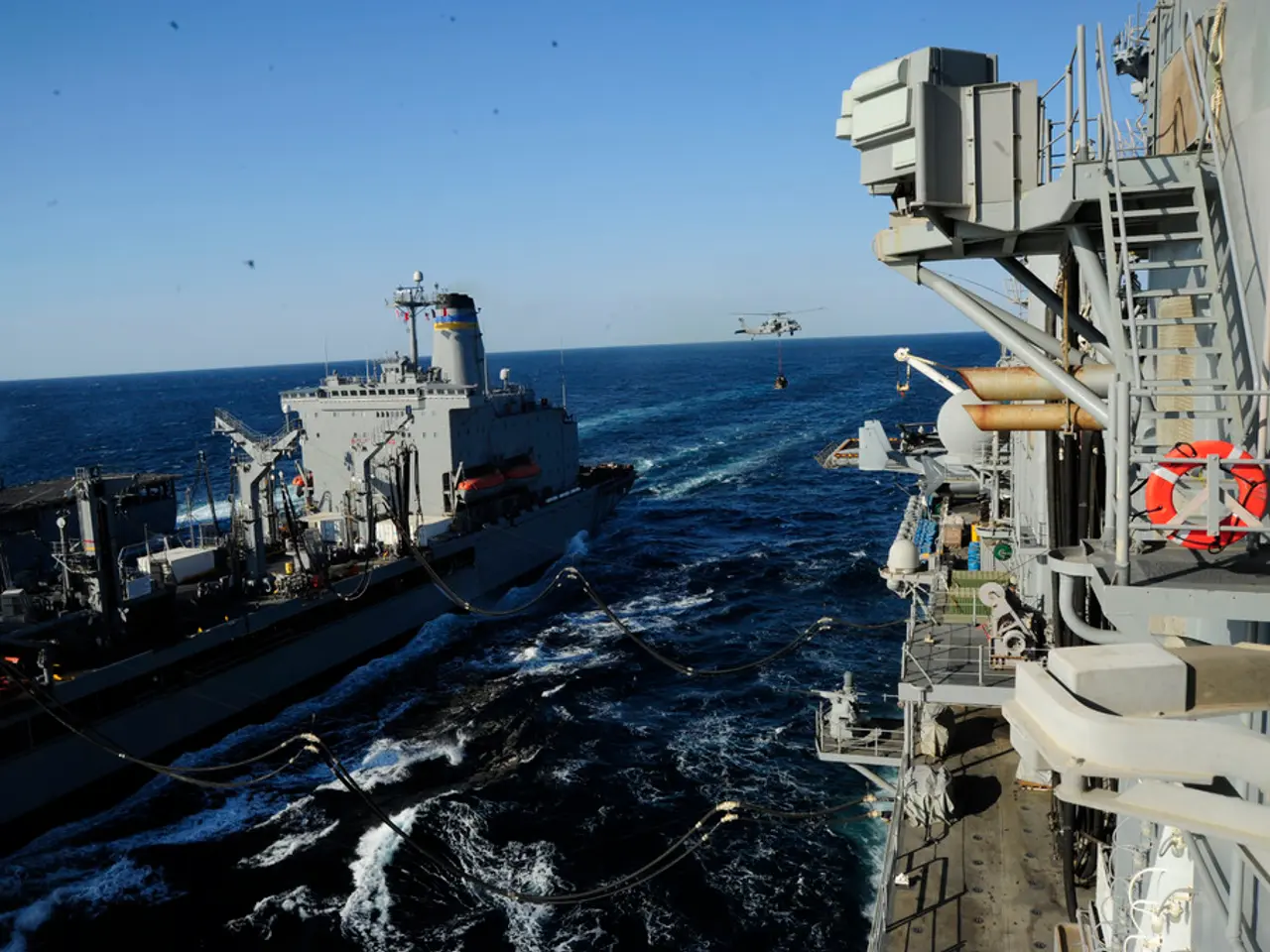Transitioning Drone Adapts Fluidly Between Air and Water with Adjustable Propeller Angles
A Revolutionary Hybrid Drone Challenges the Norm in Unmanned Vehicle Design
A groundbreaking hybrid drone, developed by students at Aalborg University, is shaking up the world of unmanned vehicle design with its unique ability to seamlessly transition between air and water. This versatile device, equipped with variable pitch propellers, offers a new perspective on specialization versus versatility in drone technology.
The variable pitch propeller system is the heart of this hybrid drone's capabilities. In air, the propellers adopt a higher pitch blade angle to generate the necessary airflow and thrust for flight. When entering water, the blades shift to a lower pitch angle to reduce drag and increase propulsion efficiency in the denser medium. The propellers can even generate negative thrust underwater for better maneuverability. This continuous, automatic adaptation of blade angles optimizes propulsion and drag characteristics, enabling the drone to quickly and seamlessly switch between flying and swimming modes without sacrificing performance or control.
The hybrid drone project opened up a world of possibilities for various industries. Search and rescue operations could benefit from a single device capable of scanning large areas from the air before diving to investigate underwater locations. Infrastructure inspection presents another compelling use case, particularly for bridges, offshore platforms, and coastal installations. Marine research, environmental monitoring, and coastal pollution tracking are other promising application areas where hybrid drones could streamline data collection processes.
The ability to operate in two different environments using one device could replace the need for separate aerial drones and underwater vehicles, potentially reducing costs and expanding mission versatility. The drone's smooth environmental transitions that maintain operational effectiveness throughout the changeover process demonstrate its practical applications across various industries.
The prototype's current limitations, such as extended battery life, improved waterproofing, and enhanced payload capacity, suggest areas for future development. However, the automatic adaptation mechanism developed for this hybrid system could enhance efficiency and performance across various single-environment applications as well. The variable pitch propeller concept could influence broader drone design approaches beyond hybrid applications.
Conventional aerial drones might also benefit from propeller systems that adjust to different flight conditions, weather patterns, or payload configurations. Such innovations promise to expand the capabilities of unmanned vehicles and improve the collection of data and performance in complex operation areas.
References: [1] Aalborg University (2021). Hybrid Drone with Variable Pitch Propellers. [Online] Available at: https://en.aaue.dk/news/2021/hybrid-drone-with-variable-pitch-propellers
[2] The Engineer (2021). Hybrid Drone with Variable Pitch Propellers. [Online] Available at: https://www.theengineer.co.uk/hybrid-drone-with-variable-pitch-propellers/
[3] New Atlas (2021). A hybrid drone that can fly or swim, thanks to variable pitch propellers. [Online] Available at: https://newatlas.com/science/hybrid-drone-variable-pitch-propellers/
[4] Gizmodo (2021). This Hybrid Drone Can Fly and Swim Using Variable Pitch Propellers. [Online] Available at: https://gizmodo.com/this-hybrid-drone-can-fly-and-swim-using-variable-pitch-1847439869
[5] IEEE Spectrum (2021). A Hybrid Drone That Can Swim and Fly. [Online] Available at: https://spectrum.ieee.org/automaton/robotics/robotics-hardware/a-hybrid-drone-that-can-swim-and-fly
- The innovation in the hybrid drone's software allows for continuous, automatic adjustment of blade angles, making it a potential game-changer in data-and-cloud-computing and artificial-intelligence-driven automation across various industries.
- The hybrid drone's eventual production might disrupt the market by making it possible for gadget enthusiasts to purchase an all-in-one tool, combining the functionalities of both air and water drones.
- Traditional software design for single-environment drones could find improvement through the adoption of the hybrid drone's variable pitch propeller system, enhancing overall efficiency and performance.
- The world of technology is eagerly awaiting the advancements in technology and software that could be birthed from the next stage of development for the hybrid drone, including extended battery life, improved waterproofing, and enhanced payload capacity.




